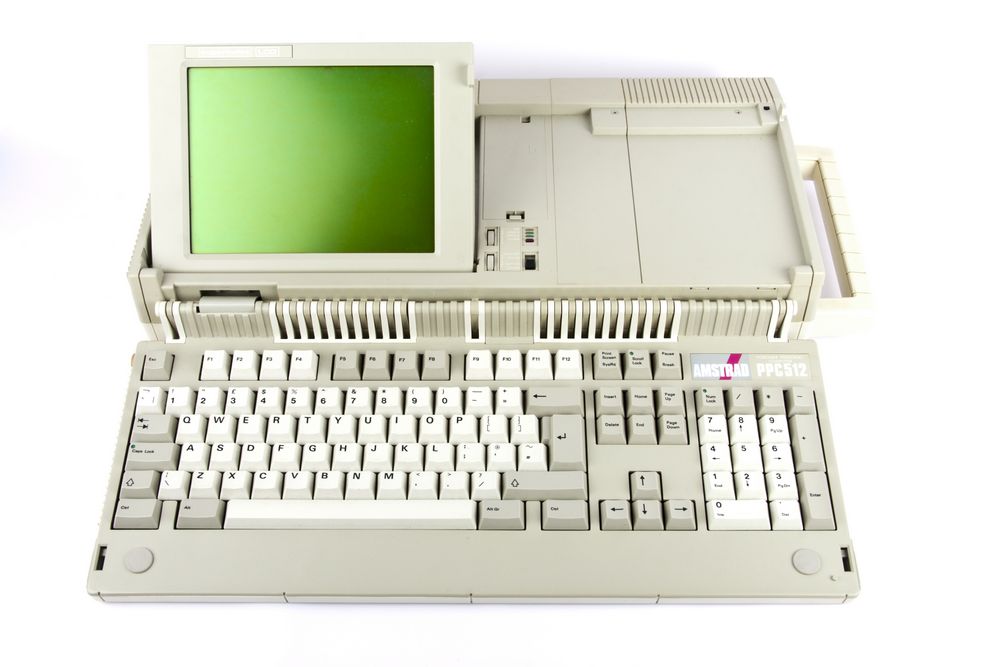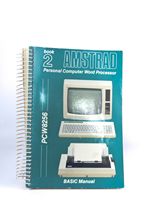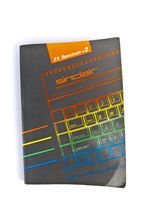
Hosted by the University of Plymouth

Hosted by the University of Plymouth
Having led the way with budget IBM-compatible systems on the desktop, the PPC 512 (and an accompanying release, the PPC 640) was Amstrad's first attempt to do the same thing for portable personal computing. The systems came with 512K and 640K RAM respectively, and used an 8086-compatible NEC V30 CPU (i.e. despite the keyboard layout, they were compatible with the IBM PC/XT rather than PC/AT technology). The supplied operating system was MS-DOS 3.2. The 9-inch display is non-backlit LCD, meaning that the machine was not ideal for use in poor lighting conditions, but an external (CGA) monitor could also be connected. The machine weighed in at 6kg, and then became somewhat heavier when you added the 10 x C cell batteries required to power it away from the mains.
Amstrad, 1988
Donated/on loan from: Prof. Steven Furnell, Plymouth University


The PCW8512 was Amstrad's second machine aimed directly at home office and small business users, offering a fully integrated word processing solution. Like its predecessor, the PCW8256, the full system came complete with a dot matrix printer, as well as the Locoscript wordprocessing application.... (read more)Amstrad, 1986
An example of one of the many compatible clones that soon followed in the wake of the IBM PC. Amstrad was one of the pioneers of truly budget clone systems, having shipped their 512K, 8086-based PC1512 in 1986. The model shown here was their next version; a 640K PC, which also includes a 30MB ha... (read more)Amstrad, 1987
Book (read more)Amstrad,

Amstrad CPC464 User Instructions Manual by Amstrad. (read more)Amstrad, 1984

The first home computer produced by Amstrad, applying the same all-in-one approach that it had already pioneered in the hifi market by providing a system with built-in cassette deck and an accompanying monitor (the 464 came with a choice of green or colour screen). In addition to this value for m... (read more)Amstrad, 1984

The GX4000 followed the early 90s trend for repackaging successful home computers as cartridge-based consoles. The device was essentially an Amstrad CPC464plus in a console-style casing. However, like Atari's XE Games System and Commodore's 64GS, the GX4000 was a resounding market failure. Alt... (read more)Amstrad, 1990

Following the success of Cambridge Computer's Z88 (Sir Clive Sinclair's first - and to date only - new computer following Amstrad's purchase of Sinclair Research), it was perhaps not surprising to see Amstrad appearing on the scene with a machine targeting the same market. Powered by the old-fait... (read more)Amstrad, 1992

As the name suggests, the ALT-386SX is based on the Intel 80386SX (a version of the CPU without the mathematical coprocessor built-in), clocked at 16 megahertz. The system had 4MB of RAM and an 80MB hard disk, and a monochrome display supporting VGA graphics. While the design is now more remini... (read more)Amstrad, 1988

The 6128 was the third machine in the CPC series, appearing just a few months after the short-lived CPC 664. Key advancements over the 464 were the inclusion of the disk drive in place of the cassette deck, and a doubling of the memory to 128K (the 664 had the disk but just 64K RAM). This combin... (read more)Amstrad, 1985

Although retaining the Notepad name (following the NC100), the 128K NC200 is more akin to a laptop, with the flip-up screen doubling the size to 16 lines, and including an MS-DOS compatible 720K floppy drive for storage. It was also somewhat heavier to carry about, a factor further emphasised by... (read more)Amstrad, 1993

User Guide - CP/M Logo & Word Processor Manual for PCW8256 by Amsoft. (read more)Amstrad, 1985

BASIC Manual for PCW8256 (Part 2) by Amstrad. 396 pages. (read more)Amstrad, 1985

ZX Spectrum+2 128K Home Computer Manual by Ivor Spital and Robert Goodwins. 206 pages. (read more)Amstrad, 1986
Building upon the massive success of the PCW8256 ad 8512, the 9512 was Amstrad's attempt to update and enhance the range. In addition to the appearance being more akin to the traditional desktop machines of the era, the most notable changes were the inclusion of a daisywheel printer (as opposed ... (read more)Amstrad, 1987